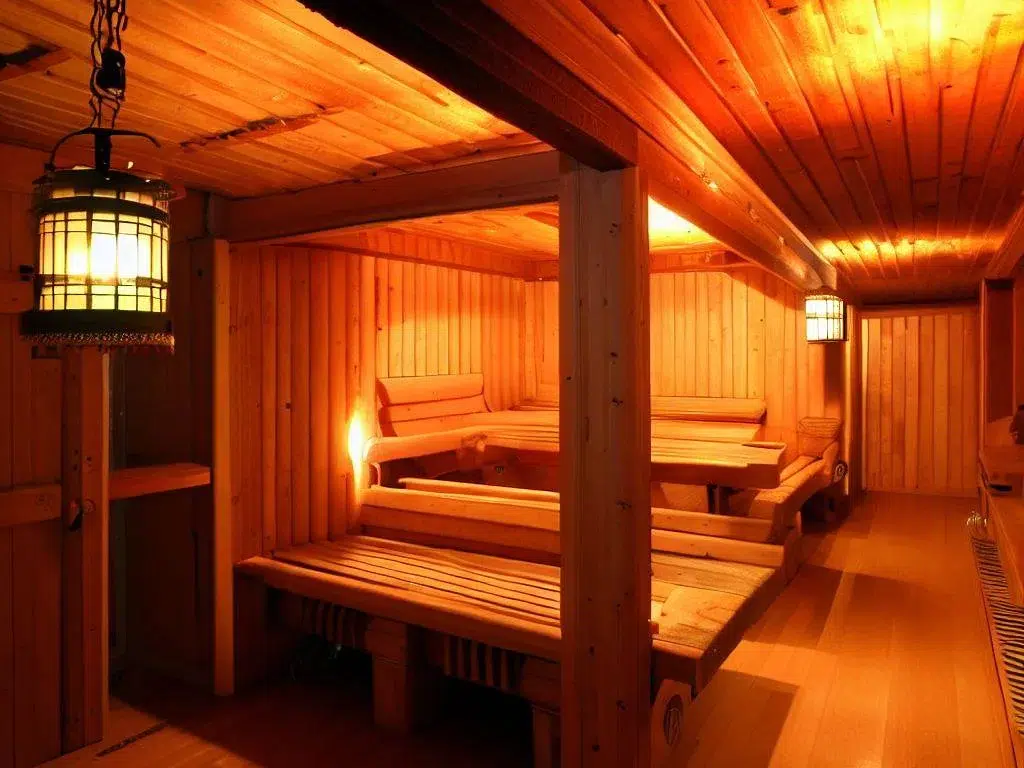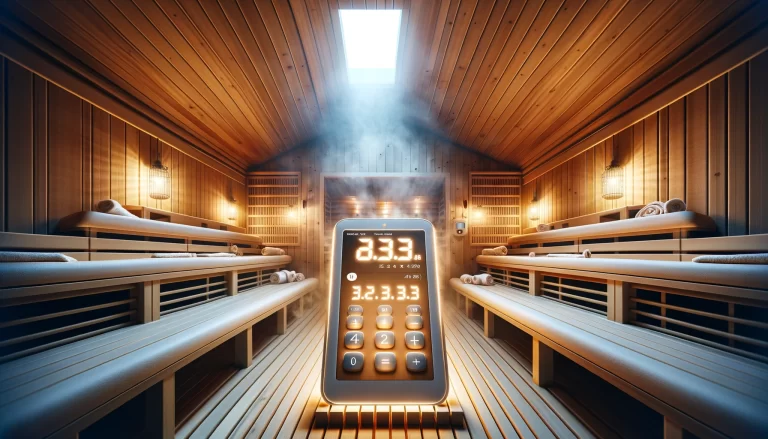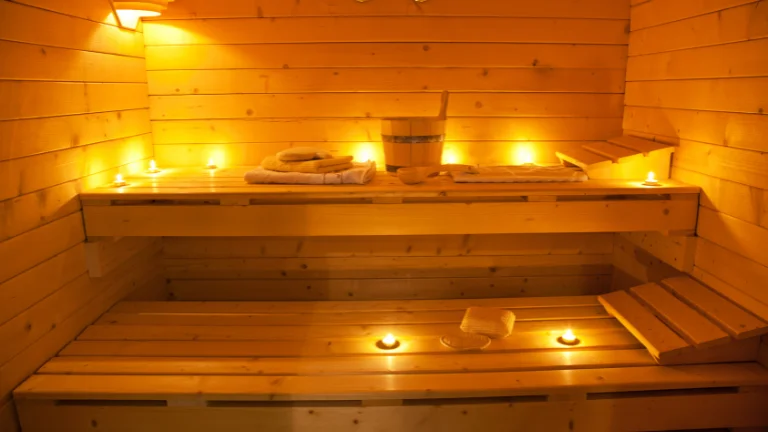Exploring the Different Types of Infrared Saunas
Discover the health benefits associated with each type of infrared saunas. Learn about far, near, and mid-infrared to find the best fit for your relaxation needs.
Introduction:
Infrared saunas have gained immense popularity in recent years due to their numerous health benefits and therapeutic effects. These saunas utilize infrared technology to emit radiant heat, providing a relaxing and rejuvenating experience. However, not all infrared saunas are the same.
In this article, we will delve into the world of infrared saunas and explore the different types available in the market today.
Types of Infrared Saunas
- Near-Infrared Saunas:
- Near-infrared saunas operate at a shorter wavelength, typically ranging between 700 to 1400 nanometers. This type of sauna is known for its ability to penetrate the skin deeply, targeting the body at a cellular level. Near-infrared saunas are often preferred for their potential therapeutic effects, including improved detoxification, wound healing, and pain relief.
- Mid-Infrared Saunas:
- Mid-infrared saunas emit heat at a wavelength between 1400 to 3000 nanometers. This type of sauna primarily focuses on raising the core body temperature, inducing a deep sweat, and promoting cardiovascular health. The mid-infrared wavelength is believed to stimulate blood circulation and enhance the body’s natural detoxification processes.
- Far-Infrared Saunas:
- Far-infrared saunas operate at a longer wavelength, typically ranging between 3000 to 10,000 nanometers. These saunas are designed to provide a gentle and comfortable heat experience, allowing users to enjoy longer sauna sessions. Far-infrared saunas are popular for their potential benefits, such as stress reduction, relaxation, and improved sleep quality.
Types of Infrared Waves:
Infrared waves are further classified into different types based on their wavelength. Let’s explore the five main types of infrared waves:
- Near-Infrared Waves:
- Near-infrared waves have the shortest wavelength and are often referred to as “shortwave.” They are commonly used in medical applications, such as photobiomodulation therapy, due to their ability to deeply penetrate the body’s tissues.
- Short-Wave Infrared Waves:
- Short-wave infrared waves fall within the mid-infrared range. They are utilized in various industrial and scientific applications, including material testing, moisture detection, and thermal imaging.
- Mid-Infrared Waves:
- Mid-infrared waves encompass a broad range of wavelengths and are often associated with thermal imaging cameras. They are commonly used in fields such as meteorology, remote sensing, and environmental monitoring.
- Long-Wave Infrared Waves:
- Long-wave infrared waves have the longest wavelength and are often used for thermal imaging purposes. They are commonly employed in night vision devices, surveillance systems, and heat-seeking equipment.
- Far-Infrared Waves:
- Far-infrared waves, also known as “terahertz radiation,” are frequently used in infrared saunas. These waves are known for their ability to penetrate the skin deeply, providing soothing and therapeutic heat.

Differences in Infrared Saunas:
While all infrared saunas operate on the principle of using infrared technology to generate heat, there are some notable differences among them. These differences can include:
- Heating Elements: Infrared saunas can feature various types of heating elements, such as carbon fiber panels, ceramic heaters, or quartz rods. Each type of heating element produces infrared heat differently, leading to variations in the sauna’s performance and heat distribution.
- Design and Construction: Infrared saunas come in different designs, including portable models, indoor installations, and outdoor cabins. The materials used, such as wood or metal, can also vary, affecting the overall aesthetics and durability of the sauna.
- Temperature Control: Saunas may differ in their temperature control mechanisms. Some models offer precise digital controls, allowing users to adjust the temperature according to their preferences. Others may have manual controls or pre-set temperature options.
- Additional Features: Certain infrared saunas may come equipped with additional features like built-in sound systems, chromotherapy lighting, and ergonomic seating arrangements. These features enhance the overall sauna experience and contribute to a more relaxing atmosphere.
Visit For more reading about hot tubs & patios and more information about Saunas.
Types of infrared saunas for home
There are three main types of infrared saunas for home:
- Far-infrared saunas emit the longest wavelength of infrared light, penetrating the deepest into the body. They are said to be the most beneficial for health but can also be the most expensive.
1. Far-infrared sauna for home
- Near-infrared saunas: These saunas emit the shortest wavelength of infrared light, which penetrates the skin more superficially. They are said to be good for skin health and pain relief.
2. Near-infrared sauna for home
- Full-spectrum saunas: These saunas emit far-, near-, and mid-infrared rays. They are said to offer the benefits of all three types of saunas.
3. Full-spectrum sauna for home
Addition to the type of infrared light they emit, infrared saunas can also be classified by size and portability.
- Cabinet saunas: These are the most common infrared saunas for home. They are typically made of wood and have a door that closes to trap the heat inside. Cabinet saunas can range from small, single-person units to large, multi-person units.
Cabinet sauna for the home
- Portable saunas: These saunas are smaller and lighter than cabinet saunas, making them easy to move around. They can be a good option for people who live in small spaces or want to take their sauna with them when they travel.
Portable sauna for home
- Floor saunas: These saunas are built into the floor of your home. They are typically larger than cabinet saunas and can accommodate more people. Floor saunas are a good option for people who want a permanent sauna installation.
Floor sauna for the home
When choosing an infrared sauna for your home, it is important to consider your needs and budget. Consider the size of the sauna, the type of infrared light it emits, and whether you want a portable or cabinet sauna. You should also factor in the cost of the sauna and the cost of operating it.
Factors to consider when choosing an infrared sauna:
- EMF levels: Some infrared saunas emit higher electromagnetic field (EMF) levels than others. Choose a sauna with low EMF levels below 300 hertz or cycles per second, if you are concerned about EMF exposure.
- Construction materials: The sauna’s construction materials can affect the heat quality and the overall experience. Choose a sauna made of high-quality materials that will last for many years.
- Features: Some infrared saunas have additional features, such as essential oil diffusers, chromotherapy lights, and sound systems. These features can add to the overall experience, but they may also increase the cost of the sauna.
Final Thoughts:
Infrared saunas offer a unique and effective way to experience the benefits of heat therapy. Understanding the different types of infrared saunas, such as near-infrared, mid-infrared, and far-infrared, along with the various types of infrared waves, allows individuals to make informed decisions when choosing a sauna that aligns with their specific needs and preferences.
Whether you seek deep cellular healing, cardiovascular support, or relaxation, there is an infrared sauna type suited for you. Take the time to explore the options and embark on a journey towards improved well-being.
Related Sources:
If you are interested in learning more about the benefits of sauna, you may want to check out these articles:
- [Discover How Many Calories You Can Burn in a Sauna]: This article explains how sauna can help you burn calories by increasing your heart rate, metabolism, and oxygen consumption. It also provides some tips on how to use sauna safely and effectively.
- [Sauna Before or After Workout]: This article discusses the pros and cons of using sauna before or after your workout. It also gives some advice on how to optimize your sauna session for recovery, relaxation, and performance.
- [Does Sitting in a Sauna Burn Calories]: This article explores the science behind the calorie-burning effects of sauna. It also compares sauna with other forms of exercise and reveals how much weight you can lose by using sauna regularly.
Note: The above article is for informational purposes only. Consult a healthcare professional before using an infrared sauna or making any significant changes to your wellness routine.
Common Queries:
Q. Are infrared saunas safe? Yes, infrared saunas are generally considered safe for most individuals. However, it’s important to follow manufacturer guidelines and use the sauna responsibly. If you have any underlying health conditions or concerns, it’s advisable to consult with a healthcare professional before using an infrared sauna.
Q. What are the health benefits of using an infrared sauna? They offer a range of potential health benefits, including relaxation, stress reduction, improved blood circulation, detoxification, pain relief, skin purification, and enhanced sleep quality. However, individual experiences may vary, and the specific benefits may depend on factors such as sauna usage, frequency, and duration.
Q. How do infrared saunas differ from traditional saunas? Use infrared heaters to emit radiant heat that directly warms the body, whereas traditional saunas rely on heated air to warm the space. The lower ambient temperature of infrared saunas makes them more comfortable for many individuals, allowing for longer and more enjoyable sauna sessions.
Q. Can infrared saunas help with weight loss? Infrared saunas can contribute to weight loss efforts indirectly. While they can help increase heart rate, stimulate sweat production, and potentially burn some calories, the primary weight loss benefits come from the potential detoxification and relaxation effects, which may support overall well-being and a healthy lifestyle.
Q. How often should I use an infrared sauna? The frequency of infrared sauna use depends on personal preferences, health goals, and individual tolerance. Starting with 1-2 sessions per week and gradually increasing the frequency is a common approach. It’s crucial to listen to your body and avoid excessive or prolonged sauna sessions to prevent dehydration or discomfort.
Q. Can I use an infrared sauna if I have a medical condition? Individuals with specific medical conditions should consult with their healthcare provider before using an infrared sauna. Conditions such as cardiovascular diseases, low or high blood pressure, diabetes, pregnancy, and certain skin conditions may require medical guidance or monitoring during sauna use.
Q. Are there any age restrictions for using infrared saunas? Most infrared saunas are suitable for adults, but age restrictions may vary depending on the specific sauna model and manufacturer’s guidelines. It’s important to follow any age recommendations provided by the sauna manufacturer and seek professional advice for children or adolescents.
Q. How long should I stay in an infrared sauna? Sauna sessions typically last between 10 to 30 minutes, depending on personal preference and tolerance. Beginners may start with shorter sessions and gradually increase the duration as they become more comfortable. It’s crucial to stay hydrated and listen to your body to avoid overheating.
Q. Can I use an infrared sauna if I’m pregnant? Pregnant women should consult with their healthcare provider before using an infrared sauna. Elevated body temperature for extended periods may pose risks during pregnancy. It’s important to prioritize the safety of both the mother and the developing baby.
Q. How do I maintain and clean an infrared sauna? Proper maintenance and cleaning are essential for the longevity and hygiene of your infrared sauna. Follow the manufacturer’s instructions for regular cleaning, which may involve wiping down the interior with a mild cleaner, keeping the sauna dry, and ensuring proper ventilation.













